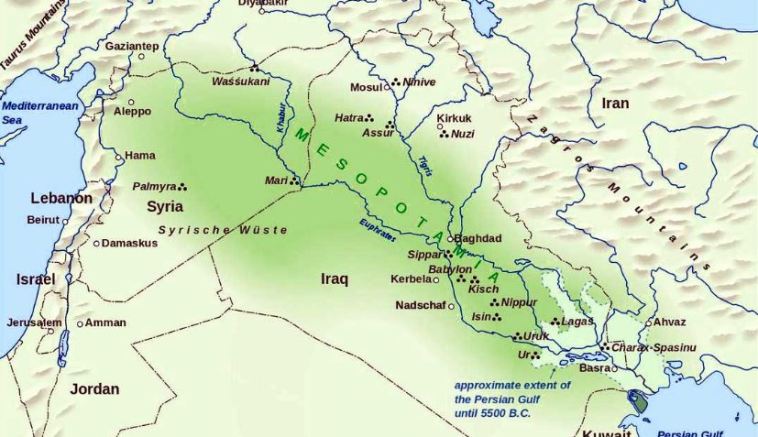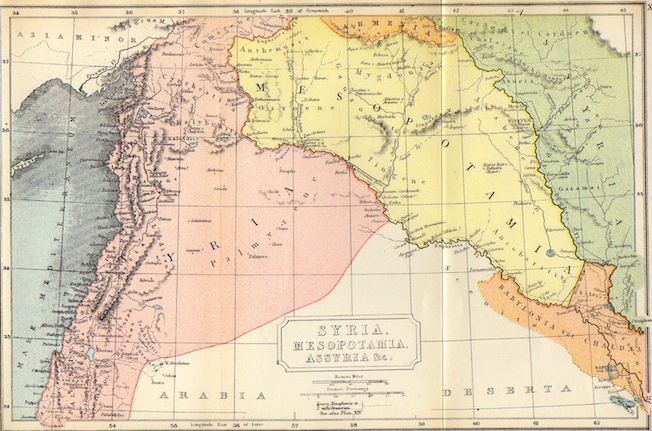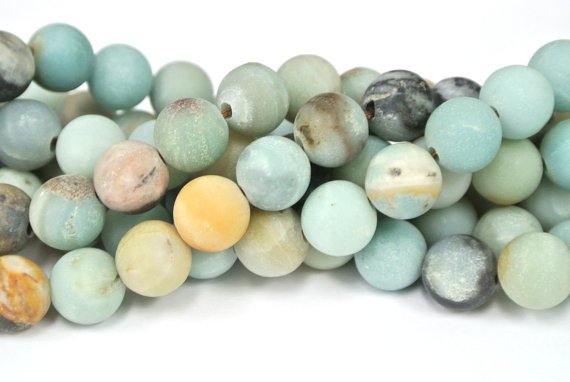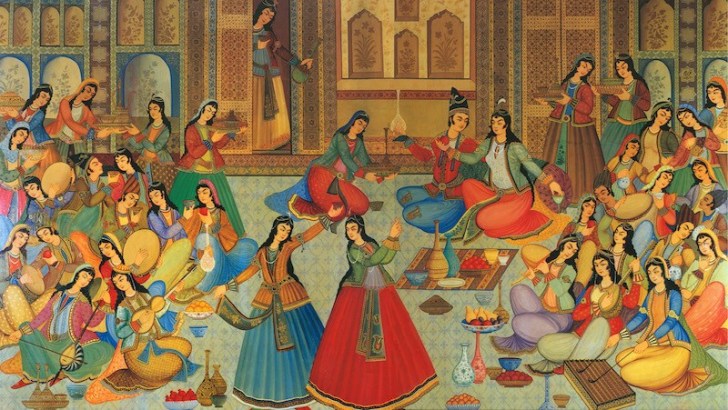
| VEDIC INFLUENCE Vedic Influence in Muslim countries like Iraq and Iran :
If we go back to the time before Islam was born, around third millennium BCE, India had some cultural bond with Mesopotamian civilization, now Iraq and Iran. According to N. N. Bhattacharya, an Indologist, history has several references to show the contact between Indian civilization and the Islamic world. At one time, in fact, Vedic tradition had taken roots in the land of Iraq. The Indian trade with West-Asia, today is known as the Middle-East, goes way back and history supports that too.
Vedic traditions were prominent even in Muslim countries like Iraq and Iran :
During the Rig Vedic age, Afghanistan and the neighboring countries were part of ancient India, the Bharatvarsha, and ancient Iran was also an integral part of India. Some parts of Vedic culture is also seen in the Western Asia. Zenob, a Syrian writer, says, “there was an Indian colony in the canton of Taron (in the region of modern day Turkey) on the upper Euphrates, to the west of Lake Van, as early as the second century BCE.” There were constructions of two huge temples with gigantic images of Vedic divinities, which stood as large as 18 feet and as high as 22 feet.
A pioneer British Assyriologist and linguist, Dr. Sayce says that the trade by sea between India and Babylon was initiated at around 3000 BCE, when Ur Bagas, the first King of United Babylonia, ruled Ur of the Chaldees. In the third millennium BCE, Indian teak wood was found in the remains of Babylonian artifacts, and Hewitt says that the wood must have come from the port of Malabar coast (Ref.: Mookerji, Indian Shipping, p. 86). Babylonia also imported precious stones from India, according to Herodotus (Ref: Cowell, Jataka, III, p.83). The Baveru Jataka (no. 339) talks about the visit of Indian maritime traders to the kingdom of Baveur (Babylonia), during the Seleucid empire, established in 312 BCE.
The ancient city of Babylon Moreover, Indian traders exported sandalwood, rice, and peacocks to Babylonia. The peacocks brought by Hiram’s ships to Solomon were called tuki, derived from Tamil Tagai. Before Islam had the roots, Arabia imported large amount of Indian spices from India. The mart of Batene was imported lots of Indian wares. To add, Arabic words like “Quaranful” has the roots in the Indian words like “Karanphul”. Even the word “made of Indian steel” is proverbial in the Arabic literature.
The
point of all this is to establish that there used to be trade relations
between India and Middle East from a long time, and some scholars
even argue that the trade interrupted the rise of Islam back in
the days too.
Known as Parthia or Persia in the past, Iran had tribes connected with Vedic tradition settling in. They were the Druhyus, Panis, Parsas, and Bisnois. They were practicing several Vedic rituals like the fire ritual, the Sun worship, and many later found their way in Zoroastrianism. Even the rulers supported these practices, but later when Muslims took over, the practices started to fade away.
When Parashuram defeated the Kshatriyas 21 times during the Vedic period, those who lost refused to follow Vedic civilization and left India to find their own places. They were known as Parshvas and later turned into Zoroastrianism where they worshiped Asur Medha, or Asur Mahta, or what was later known as Ahuramazda. They are known as Parsis today.
Dr. Poonai writes, “The doctrines of the Vedas were therefore widely taught to the noble people of Iran, also called Purusham Aryanam, a phrase which can be abbreviated to Parsianam or Parthians or Persians.” There used to a Vedic axe warrior by the name of Parashurama, and that is what he believes how the name Persia came about.
Recently, Dr. Peter B. Clarke, editor of The World’s Religions (1993, p. 130), writes that the name Iran has been derived from Aryan and Aryans had inhabited the ancient Iran. The old Iranian language was also very similar to Sanskrit.
The relations between this ancient Iranian and the language of the Veda are so close that it is not possible satisfactorily to study one without the other. It is quite possible to find verses in the oldest portion of the Avesta, which simply by phonetic substitutions according to established laws can be turned into intelligible Sanskrit.
Which is then summarized by Dr. Jagat K. Motwani :
It
clearly suggests that the Iranian Aryans and the Indo-Aryans were
one and the same people in ancient times when they ‘lauded
the same gods with the same hymns, and worshiped them with identical
rites.’ The people may not have been known as Hindus or Persians
at the time. All the people of the subcontinent, including Indians,
Iranians, Nepalese, Bhutanese, Sri Lankans, Burmese, etc., must
have been called Aryans, as the country was known as Aryavarta,
Aryadesh, or Aryabhoomi. The unfounded theory of the Aryan Invasion–engineered
in London and guided by the world-known British policy ‘Divide
and Rule’–seems to have divided Indians and Iranians
who, in ancient times, were one and the same people.
Still more striking is the similarity between Persia and India in religion and mythology. Gods unknown to any Indo-European nation are worshiped under the same name in Sanskrit and Zend.
In Iran, there is a ritual known as yazna. In this ritual, the festive meal would take place where a god would be invited, and Houma, a fire, and a sacred drink would be offered. All of this would carry out in the open air outside and would be performed by the clan known as Magi. After such performance and rituals, they believe that they would receive blessings from gods.
The tradition is quite similar to the Vedic ritual yajna, which is pronounced as Yagya, and the homa ritual that has a central fire that would be the vortex to the deity or the mouth of the deity. The drink is known as soma and then consumed as prasada. They’re mostly performed by the Brahmins.
It is believed that this Iranian ritual has been carried forward from the Vedic tradition.
Dr. Huang, another Indologist, writes in the introduction to Aitareya Brahmana (Vol I, page 23) :
The ancestors of the Brahmans and those of Parsis (the ancient Iranians) lived as brother tribes peacefully together.
This is an indicator of the time when Parsis came to India in 910 CE to escape the prosecution from the hands of Muslims.
The spiritual philosophy and Vedic culture in Persia was way before Zarathustra founded the Zoroastrian religion. The Zend Avesta of Zoroastrianism is Chhanda Avasta, which has been derived from Rigveda. Moreover, Shri Krishna used to be worshiped in the region even after Islam found the roots. Arminius Vambery, a Hungarian writer who traveled to several Muslim countries, writes that he went to the village of Saadi, near the city of Shiraz in Iran, and found that the name of the village has come from a poet who was buried there. Saadi was a devotee of Vishnu, even though he was Muslim by birth. Vambery writes,
“He even assumed the religion of the worshipers of Vishnu in order to extend and increase his knowledge of all things.”
In Origins of Several Empires, Sir W. Drummond writes :
In the early ages of the world, the inhabitants of Iran and India were governed by the same laws and were united as one people under the same monarchy.
As quoted by Lt. General Charles Vallancy, Sir William Jones says :
It has been proved by clear evidence and plain reasoning, that a powerful monarchy was established in Iran, long before the Assyrian government, that it was in truth a Hindoo monarchy that subsisted for many centuries and that its history has been engrafted on that of Hindoos, who founded monarchies of Ayodhya and Indraprastha.
V. Gordon Childe in his book The Aryans: A Study of Indo-European Origins, V., writes :
Finally we know that there existed among the Mitanni at this time a class of warriors styled marianna which has suggested the comparison with the Sanskrit marya, young men, heroes.
He goes on to describes the dynasts in Mesopotamia region, which he thought were Mitaani and Hittites :
So
it is clear enough that the dynasts installed on the Upper Euphrates
by 1400 B.C. were Aryans, closely akin to those we meet in the Indus
Valley and later in Media and Persia. But their subjects were non-Aryan
Asianics, and the rulers had adopted the native language and the
Babylonian script for their official correspondence, and apparently
acknowledged local gods besides their own.
He writes :
Argument again in favor of a late date for the Rigvedic hymns is sought to be derived from the extreme similarity of Avestic gathas and Rigvedic mantras which are sometimes identical. There is no doubt that the Indo-Aryans and the Iranians once formed one people and lived together.
They naturally have some mantras in common. But we must remember that Zoroaster did not himself compose these gathas. He only preserved what had come down for centuries, and even if we take 550 B.C. as the date of Zoroaster, that cannot be the date of those gathas. Indeed, as the Hindus have preserved the Vedic mantras intact for thousands of years, because they have become sacred, so also must the Avestic gathas have been preserved intact for thousands of years before they were taken up by Zoroaster for his new religion.
Vedic Influence in Iraq :
Mesopotamia is the ancient name of Iraq and it is the land between the Tigris and Euphrates rivers, where records show that the area has some recognition of Vedic gods. This is where Sumerian society was formed, followed by Assryian, and later by Mitanni, Hittite and Kassites.
The excavations at Ur goes back to 6th and 7th century BCE and shows Amazonite beads, which could have only come from Nilgiri Hills in South India. Even the area in Mesopotamia that became Iraq, Baghdad had become a city of Vedic learning. The minister at that time was brought up in India and received his education in Kashmir, before being appointed as the Minister of the court in Baghdad.
Amazonite Beads Baghdad might come from the Sanskrit word Bagh, which might resemble Bhag or Bhagavan and dad in Sanskrit means “to give”. So, Baghdad, in Sanskrit terms, adds up to “Gift of God” or “City of God”. Before that, it was known as Madianul-as-Salam, which means “City of Peace”. Now, it is more like a city of pieces.
The city was founded and built by Caliph Al-Mansur in 145 A.D. (765-63 CE) and was designed with the help of Indian engineers and architects. The Indian engineers and architects made it with the Vedic fashion and was one of the first Muslim cities with the circular design.
Some believe that in fact, it was a Vedic city which was later captured by Muslims outside Saudi Arabia.
Capturing and renaming cities is a tradition in the long history. For instance, Jarbavatu was renamed into Ahmedabad, or Prayag was named into Allahabad, Agravan was renamed into Agra, Bhagyanagar as Hyderabad and many others.
There are many other similarities between India and Semitic world. The flood legends, cosmological stories, the earth tales are some of them. If you see the legends and stories related to mysteries of creation, life, and death, childbirth, death to the Theogony that entered Western Asia, then one can see that many reflects in the Islamic mythology and then changed, altered and adapted to suit the local mood.
As we study Talmud and Midrash, some stories can be found to be directly adapted from Indian sources. For instance, the Puranas talks about the cosmographic conception of seven firmaments and seven underworlds, which is quite similar to that in Koran XLI, 8. It is also similar to the Hebrew concept of seven heavens (Villon, Rakia, Shekhakim, Szebhul, Maon, Makhon, and Araboth) and the seven underworlds (Eretz hatachtonch, Adamah, Arka, Ge, Neshia, Zija, and Tebel).
Sufism :
Sufism came into existence during the second half of the eighth century, and they were inspired from the Indian wandering ascetics. Zuhd manifests some earlier, or even that the asceticism is more of proto-Sufism. Before that, Tasabhuf was followed by various sects like Zuh’ha’d, the Kkas’sas, the Shak’khaun, the Nashmak, and many others.
Titus, Indian’s Islam, p. 149 :
The presence of wandering Indian monks was a factor of practical importance to the adherents of Islam as early as the time of Abbasid Caliphate.
Reception of Vedic Thought by Early Muslims :
In the early days, the Muslims were ready and open to learning from India and even introspected the knowledge provided by the Vedic philosophy. However, as Abbasid’s power declined during the ninth century the tradition of exchanging culture between India and Baghdad got cut off completely.
As Arabian power fell into the hands of Turks, the Islamic culture and learning started to be decentralized and spread throughout, even in the lands that were spread with Vedic thoughts. And the Turks were not very respectful towards the Vedic culture like the Arabs were.
Edward Pococke writes about the evidence that shows how Persia was built as an extension of Bharatvarsha and Vedic culture :
The ancient map of Persia, Colchis, and Armenia is absolutely full of the most distinct and starling evidences of Indian colonization and what is more astonishing, practically evinces, in the most powerful manner, the truth of several main points in the two great Indian poems, the Ramayana and Mahabharatha. The whole map is positively nothing less than a journal of emigration on the most gigantic scale.
References :
|






